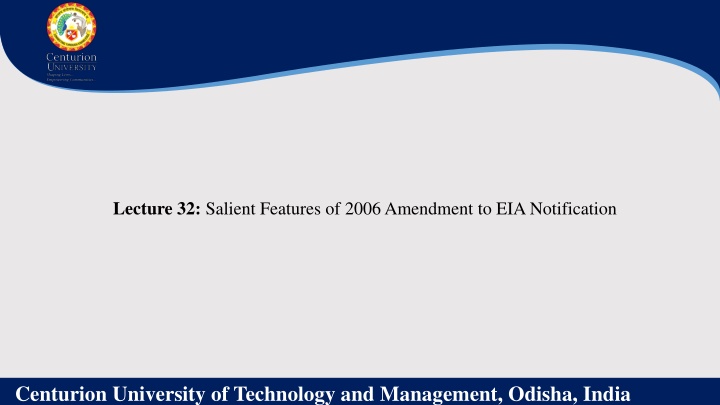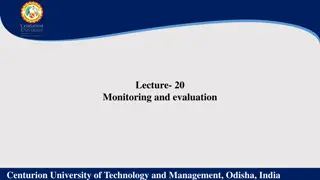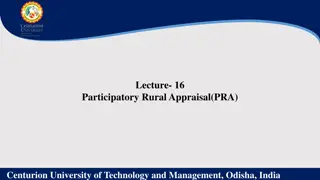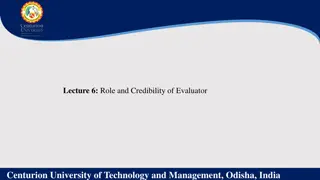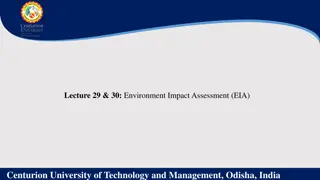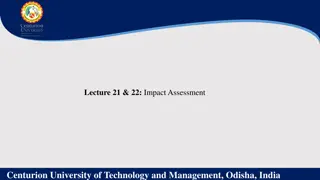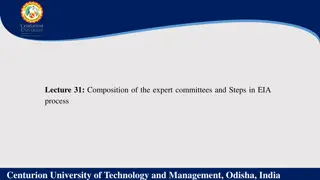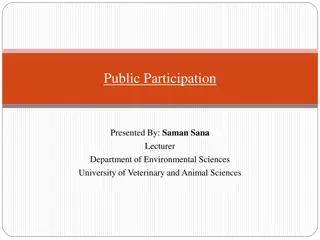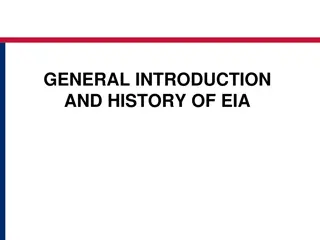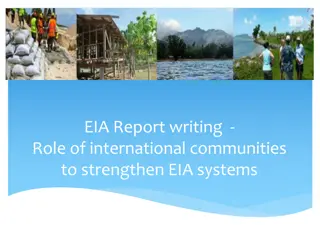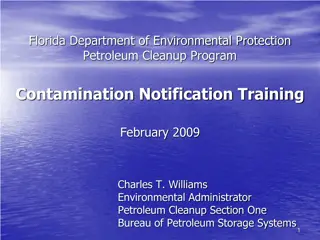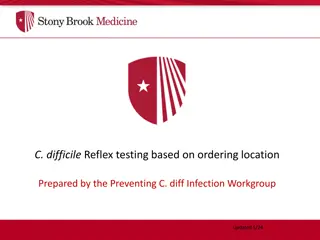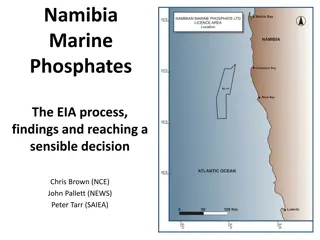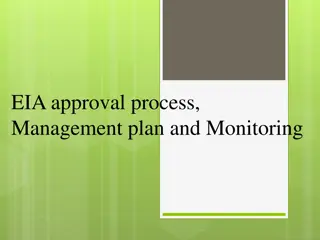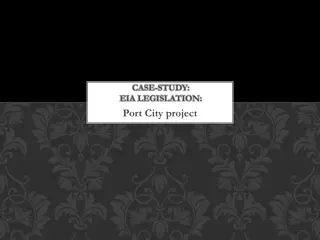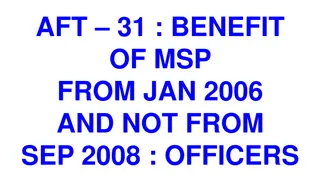Salient Features of 2006 Amendment to EIA Notification at Centurion University
The 2006 amendment to the Environmental Impact Assessment (EIA) Notification decentralized environmental clearance projects, categorizing them into Category A and Category B for national and state-level appraisals. The EIA cycle now includes screening, scoping, public hearing, and appraisal stages for Category A and Category B projects. EIA is crucial for environmentally safe and sustainable development, providing a cost-effective method to minimize adverse impacts. However, there are some shortcomings in the EIA process, including loopholes in application processes, inadequate public participation, insufficient expertise, and dependencies on technical data.
Download Presentation

Please find below an Image/Link to download the presentation.
The content on the website is provided AS IS for your information and personal use only. It may not be sold, licensed, or shared on other websites without obtaining consent from the author.If you encounter any issues during the download, it is possible that the publisher has removed the file from their server.
You are allowed to download the files provided on this website for personal or commercial use, subject to the condition that they are used lawfully. All files are the property of their respective owners.
The content on the website is provided AS IS for your information and personal use only. It may not be sold, licensed, or shared on other websites without obtaining consent from the author.
E N D
Presentation Transcript
Lecture 32: Salient Features of 2006 Amendment to EIA Notification Centurion University of Technology and Management, Odisha, India
Salient Features of 2006 Amendments to EIA Notification Environment Impact Assessment Notification of 2006 has decentralized the environmental clearance projects by categorizing the developmental projects Importance of EIA Shortcomings of EIA Process environmental clearance projects by categorizing the developmental projects in two categories, i.e., Category A (national level appraisal) and Category B (state level appraisal). Category A projects are appraised at national level by Impact Assessment Agency (IAA) and the Expert Appraisal Committee (EAC) and Category B projects are apprised at state level. State Level Environment Impact Assessment Authority (SEIAA) and State Level Expert Appraisal Committee (SEAC) are constituted to provide clearance to Category B process. Centurion University of Technology and Management, Odisha, India
After 2006 Amendment the EIA cycle comprises of four stages: Screening Scoping Public hearing Appraisal Category A projects require mandatory environmental clearance and thus they do not undergo the screening process. Category B projects undergoes screening process and they are classified into two types. Category B1 projects (Mandatorily requires EIA). Category B2 projects (Do not require EIA). Thus, Category A projects and Category B, projects undergo the complete EIA process whereas Category B2 projects are excluded from complete EIA process. Centurion University of Technology and Management, Odisha, India
Importance of EIA Process EIA links environment with development for environmentally safe and sustainable development. EIA provides a cost effective method to eliminate or minimize the adverse impact of developmental projects. EIA enables the decision makers to analyse the effect of developmental activities on the environment well before the developmental project is implemented. EIA encourages the adaptation of mitigation strategies in the developmental plan. EIA makes sure that the developmental plan is environmentally sound and within the limits of the capacity of assimilation and regeneration of the ecosystem. Centurion University of Technology and Management, Odisha, India
Shortcomings of EIA Process Loopholes in the application process Inadequate public participation Insufficient expertise Dependency on technical and scientific data and analysis Quality of EIA Centurion University of Technology and Management, Odisha, India
